
mixedbreed
-
Posts
40 -
Joined
-
Last visited
Content Type
Profiles
Forums
Downloads
Posts posted by mixedbreed
-
-
These people in Bangkok have what you are looking for:
http://www.phonglaor.com/index.php?lang=th
Also have a facebook page:
-
Hello Canada,
No, all inclusive, I don't remember the Cassava trucks having to wait more than a few hours. The sugar cane trucks can wait a few days, but thats why they charge more.
-
Hello Canada,
We pay around
160 baht / ton for truck to take Cassava to Factory, Approx 60 kilometers
180 baht / ton for truck to take Sugar cane to factory, approx 60 kilomteres.
-
We ran into labor shortage problems for both sugar cane and Cassava harvesting a couple of season's ago, we had the Kubota M7040 tractor already, so purchased the high loader from CX-Tractor in Bangkok. Since we don't manually load the trucks anymore This has allowed us to do the harvest with just the regular farm workers and rental trucks.
-
This is disturbing,
The theft,
The discussion with the Pooyai (Kaman)
The monetary payment negotiations
The attempt at the sliding out of any future hospital / clinic obligations
The 20% skim off's for the Pooyai (Kaman) and his second in command.
It all makes perfect sense.. just a very small part of daily living here in Isaan.
Does this mean I have been here "To long"??
-
 1
1
-
-
I posted this back in 2009, after reading back through it i think my thoughts haven't changed that much.
All 4 tractors are still performing well. I purchased a small excavator and front loader, which has taken alot of the load off the tractors.
My Thailand tractor experiences.
Just thought I would put out my experiences, I am not advocating these brands but trying to give you my experiences. I am a slow mover and some of these decisions have taken years to be decided.
My first tractor purchased in Thailand was the Ford 6610 (It came with new paint and tires) the rest of the machine is probably 30 years old. It is an incredible work horse. We have one operator for it, who treats it carefully, But there is generally one major problem each year, be it transmission, PTO, oil leak etc. Considering the huge amount of work it performs, it is not surprising. But as others have pointed out, due to parts availability and knowledge of the old Ford, the team generally repair it overnight and it is back operating next day.
The Ford is operated up till the time of the first rains and after that it is parked till next dry season. It gets stuck just looking at a puddle.
For general around the farm work we next purchased a Yanmar 28hp 4wd, it came with a small blade and front loader that could be switched out easily. Due to very limited experience at this time, we purchased a rotary for it that we felt would be fine, It was actually just 1 size too big, most of the time it would be no problem, but in some of the paddies it would bog down the engine and they would have to operate it with the rotary partially lifted to bring the rpm’s back up.
It was at this time Yanmar (Thailand) gave us a trial version 35hp 4wd tractor for 6 months to use. The rotary worked perfectly on this machine. It was when they came to take the tractor back, that we realized that probably we should go ahead and purchase a unit for ourselves, so that is how we ended up with the 2 yanmars. They operate extremely well, they do our 150 rai of paddies and also contract outside. With the 2 tractors and a 12 meter manila rope, they perform very well, if one should get stuck, a quick pull from the other and it is operating again in just a few minutes. We bought the extender steel wheels for both tractors, but never use them.
For the last 4 years, I have been looking for an alternative to the old Ford, I have visited the John Deere and New Holland dealers many times, looked at purchasing a second old (reconditioned) Ford 6610, as a back up, in my mind I just couldn’t justify the costs. In dealing with Kubota for the DC60 Rice harvester I became familiar with the M7040, so after 1 year of thinking about it, we have just gone ahead and purchased it. The tractor will get a solid work out in the next 3 months while it is still in warranty.
We now have an excavator for things like tree stumps, klong building etc.
Summary:
• Ford 6610, almost indestructible, we have managed to break ours, but it was doing work that should never have been attempted by a tractor. Now we have the proper equipment eg. Excavator, Front loader. I expect it to be much more trouble free. 2wd and only used in the dry season.
• Yanmar 28hp 4wd. With the front loader attached, this is the daily work horse for all the farm chores, with a small trailer attached it does everything, all year round. (hauling people, fence posts, pipes, concrete etc) We purchased a new smaller rotary for it and is excellent each year for use in the rice paddies.
• Yanmar 35hp 4wd. This machine is used for operating all the attached equipment, silage making, hay baler, post hole digger, rotary, brush cutter, virtually all the PTO equipment has been sized for this tractor. Used all year round.
• Kubota 70hp 4wd. I have big expectations for this tractor. The M series looks like a real tractor, as opposed to the smaller L and B series, (They probably are good machines, I just never had a good feeling about them). I will keep the Ford and share the annual load between both machines. During the last couple of weeks we have been using the Kubota for knocking down the rice paddy walls to get the harvesters in and also for pulling out the harvesters when they get stuck. It has been accomplishing this easily.
We have paid cash for these machines, buying just the basic machine and going outside for the attachments, blades, plows, etc. It involves waiting a bit while someone else fits the attachments but generally we are not in a hurry. With the new Kubota, we have purchased the blade from the dealer (Buri Ram), when he realized that we where serious about not purchasing the attachments he actually matched the price for the outside blade. He would not budge on the plow price. It appears he has some flexibility on the blade but is constricted on the plow.
-
 2
2
-
-
Pull behind manure spreader is manufactured in Muek Lek.
Telephone Number: 036 341792
Managed to find a couple of photo's of the unit he built for me. His normal line of spreaders is for 40hp tractors, he built this specially for me to go behind the Ford 6610. It's almost 2 kilometers from the fertilizer plant to the furtherest fields / paddies so needed a larger unit.
-
Pull behind manure spreader is manufactured in Muek Lek.
Telephone Number: 036 341792
-
I'm after a three point linkage fertilizer spreader,if anyone in the khon kaen,chyropum or loei areas have 1 for sale or know where i can get 1,please pm me.
Also i require a boomspray 6-10 metre,600-1000 litre tank
3 point manure spreader is available from:
Ketthat Sutthitavil
Manager
Phong La-Or Pattana (Thailand) Co., Ltd.
11/84 Moo 14 Rom Klao Road, Saen Saep, Min Buri, Bangkok 10510 Thailand.
Tel: +662 9182052, +662 9182053, +662 9182056 Fax: +662 9194805
website : http://www.tarad.com/phonglaor
I have purchased several machines from him in the last several years, he services what he sells.
-
Before you want to put down your money, you might want to ask if anybody who has owned a Kubota DC 60 for at least 3 seasons would be willing to have you for a visit. There is a lot to discuss, the operating costs of these machines rise considerably each season. Not really a problem, as long as you realize it is coming and have prepared for it in your finances.
Hi mixedbreed,
Thank you for your very informative post. I have a few follow up questions if you don't mind.
What is the name and approximate cost of the Thai made machine? (I think the DC-60 is 1.4 mil)
What would you estimate the running costs of a DC-60 are per year? (In my case, we would have two harvests a year - I'm hoping harvesting about 1000 rai a year total. My wife's extended family has 300 rai alone so I would expect word of mouth should at least double that.)
What are the drawbacks of owning a machine like this?
I mentioned the idea to my father in law and he thought it was fantastic. The machine the farmers use in their area comes from two provinces away and there is a waiting list to use it. Queue jumping is also causing fights amongst neighbors.
Thanks for your help!
Hi Shipwreck
The Thai machine we have is a KPH 16, manufactured in Phitsanulok, sold in Isaan as a Tamco.
It was the only small machine we could find and we had to order it. It appears the Thai manufacturers like to manufacture the median and large size machines. Ours is a bagging machine. We paid 814,000 baht for it 5 years ago. In our area, all our customers request the rice in bags, so we have bagging machines. There are several Thai manufactures and it is worth visiting their manufacturing facilities, it is quite the eye opener. A couple are professional facilities, some are real backyard places just on a larger scale.
The Kubota is a DC60, also a bagging machine, cost was 880,000 baht 3 years ago. The costs have been new rubber tracks after approx 1000 rai, though we had an incident where getting it unstuck by jamming wood under the track caused it to tear, that was a 19,000 baht learning. This year the throat that carries the rice from the cutter bar to the thresher has worn a hole through it and will need rebuilding. I am hearing rumors that the new (cheaper) made in Thailand rubber tracks are not getting even the short life the Japanese tracks are giving. Bear in mind that in our area the rice paddies are small, lots of turning involved. After this season we will need to change both tracks again as well as need to change drive sprockets and track guide rollers as well.
This year has been a good year for rice farmers but a bit of a financial disaster for rice harvesters. The rice is bountiful and just before harvest we had strong wind storms that laid it all down, the bountiful rice was caused by water still in the paddies, this has caused very sticky conditions, we have gotten stuck often, So fuel costs are way up from normal, repair costs are way up because the machines are moving much slower due to picking up the laid down rice, cutter bars, spring tines are getting broken regularly, engines are running under heavy load as we are cutting the whole wet stem and not just the tops as normal, so belts are being changed regular, all is downtime, so yields are down for us this year. We get paid by Rai, not by sacks. Some years are great, some not, just take it and get on with it, the Thai’s who have a much tighter budget are going to suffer this year, The guy with the DC 60 near us just took his machine and parked it for this season, he reckoned he would lose money if he continued operating, it was his 3rd year and his costs had escalated beyond what he could afford.
Just another item, our customers are not always instant payers, they want to dry their rice and some want to wait awhile and see if the price goes up before selling, so we foot the diesel bill for almost the whole season, that comes to over 100,000 baht for the 2 machines this season, add onto that the repairs and parts, it pays to go into the season with some money in the bank.
It horses for courses, we have bagging machines because our customers want it that way, but possibly many area’s will want it in bins and dumped into transport to take to sell. If that is the case then you will want to look at either the DC68 or DC95 both bin machines from Kubota. (incidentally they are also cheaper than the Thai machines) It is just my opinion but looking at the Thai manufactured machine at 5 seasons old and the Kubota at 3 seasons old, the Thai manufactured machine is Looking less worn in its moving parts, has had less downtime due to repairs and I suspect as time goes by, is going to be the better machine economically.
Just some thoughts towards the end of a very busy season, maybe I’ll feel different next month, right now we have still a few weeks of baling to get done.
Just re-reading this, just thought I better mention, YES we will make money this year.
mixedbreed
-
Great information. Thanks to everyone, but it is really as easy to get work as i have read on a different thread? Just buy using the machine you will get people asking you to come do their rice, is that how the majority of the work get found?
Hi vcu33
Before you want to put down your money, you might want to ask if anybody who has owned a Kubota DC 60 for at least 3 seasons would be willing to have you for a visit. There is a lot to discuss, the operating costs of these machines rise considerably each season. Not really a problem, as long as you realize it is coming and have prepared for it in your finances.
As to the question, is it that easy to get customers.
The first year was reasonable, a few locals signed up and we did 150 rai of our own Paddy. We were the first to have and use a harvester in our area. We get 1 crop per year. The second and third years our order books were full.
And now, after 5 years of operating rice harvesters, this year we had fights in our yard, along with insults to the family. All about who was to get the machines next.
In our area there is approx 6000 rai of rice paddies, all individually too small to attract the bigger machines that come from out of area. We have a DC60 that can do approx 20 rai/day and a slightly larger 120hp Thai made machine that does approx 30 rai/day. Our season lasts from 20 days last year (not a good year for rice farmers) to probably 35 days this year, (good year for rice farmers) in our area anyway. These are small rice paddies, involves lots of unproductive turning.
These days there are only a couple of other machines, a DC60 and a DC95, so it can be seen that most people are cutting by hand, they all complain of labor shortages. We probably hear a dozen times a day, when will we buy more machines???
I highly recommend a visit to people who are operating the machines and as crude as the Thai made machines appear, in our case they actually have a better operating record than a 3 year old or more Kubota. Also as the forum started out, regarding trash in the rice, the Thai made machines, or ours anyway, have a different process path than the Kubota DC60. This seems to eliminate the trash that we get in the Kubota rice but not in the Thai manufactured machine.
A person asked in another topic, was there really money to be made with a harvester, Yes absolutely. Just like in any business, there is an expensive learning curve early on, all you need to do is survive it.
This is just a few opinions from 5 seasons of rice harvesting.
Cheers.
-
I use a Garmin GPSMAP 60CSx. It involves walking around the area you need to measure with the device.
Suppliers in Thailand are Eagle GPS from Chang Mai (sponsors of the map forum). However you will find it much cheaper to buy abroad - I bought mine in Hong Kong for less than half the Thai price.
It is reliable and solves many disputes.
We have 2 of them (Garmin GPS60). 1 for each harvester, just walk around the field, sometimes before to give a quote, otherwise afterwards.
Bought from Garmin in Singapore 2 years ago.
-
Okay let me apologise for my ignorance and I wish to try asking the question again. What is the best brand of vehicle and type of vehicle to get rice crops from a field and into the cloth sacks ready to sell on for the next stage. Information will be great, sorry if I have worded this question incorrectly, hope you all know what I am trying to ask.
Hello Mr Black & White,
If you would like to read the 2 forums shown below, they go into depth on both Rice harvesters (Thai and Japanese manufactured)as well as regarding tractors available here in Thailand.
If you have specific questions afterwards, then we can address them,
Please be aware that you have caught us at the busiest time of the year, rice harvest is in full swing and we are generally working till 11.30pm, so it may be a couple of days before you get a coherent reply.
As I mentioned sometime ago in a previous posting, please don't let commensense and logic get in the way of purchasing some of this equipment, after all you can't take it with you when you pass on and it is good fun operate.
General > Farming in Thailand Forum > Kubota Dc-60 Harvesters
General > Farming in Thailand Forum > John Deere Dealers
Mixedbreed
-
Hello OOTAI,
The finger type harvesters you describe, is the type I remember seeing while living in Japan and Korea. They seem to work reasonably enough there, as a lot of their rice is transplanted by machine and is in nice orderly rows, it is also a shorter stronger variety of rice, not prone to falling down.
It is critical that the harvest is done exactly on time, to late and as the rice is transported along the little clamp type rail to the drum, it will drop large amounts of rice to the ground.
As we plant rice by the broadcast system and a late wind storm tends to drop our crop over, the finger type is almost useless. About 5 years ago when I first started looking at purchasing a machine, the imports, where only the finger type. I ended up purchasing a Thai manufactured machine. Since then I purchased a Kubota DC60 as well, if I should decide to purchase a 3rd machine it will be another Thai machine.
Incidentally, just a couple of days ago, on a trip back up from Bangkok, I passed several truck loads of Kubota DC harvesting machines, both model 60 and 68’s, it would appear to me that within a couple more years there will be many second hand machines coming back onto the market, as supply starts to exceed demand and machines are repossessed. There seem to be many available now for contract in our area.
Mixedbreed
mixed breed
I was wondering if you have had any experience with what I call a "finger" harvester i.e. one that feeds the rice into the harvesters front using finger type arrangement rather that a rotating drum to feed the crop into the cutters. I have read that people consider them to be too slow and too wasteful i.e. losing grain over the back.
I was wondering if by too slow people mean too slow to make money when contracting. I don't want to go contracting I just want to be able to harvest at my leisure when I am ready. I don't want to have to rely on family to cut the rice or wait for a contractor to come.
I have seen this type of harvester go for between 50 and 100 thousand at the JSSR auction so if I could use it on my 50 rai it would pay that money back in 3-4 years. I have included a photo but I don't know if it will work or not (it didn't).
Your thoughts would be appreciated, thanks.
-
Hello Mailman,
As you may see from previous post #23, we have both the KPH 16 and a Kubota DC60 machines. Both are bagging machines.
We use the KPH dealer in Satuk, (actually it’s a few kilometers north of Satuk), they carry all spares for their machine. They have an extensive spare parts inventory
For 1.9 million you would be looking at their “mid size” machine which can be configured to be a bagger or bulk machine. Their large machine’s are considerably more expensive, but would not be really practical for around Buri-Ram, as you point out, the paddies are too small.
The family is correct, in as much as we hear many Kubota owners complain about the wear rate and replacement cost of the rubber tracks, us included.
Whereas the steel tracks last much longer and are a fraction of the cost when it is time to overhaul. The KPH dealer at Satuk has an excellent track pin machine in their facility, they have overhauled ours for approx 6000 baht per track, along with our Komatsu excavator tracks.
Kubota rubber tracks are now 22,000 baht per track. (it makes a big hole in any profit), and due to operator in-experience they don’t last more than a couple of season’s.
The argument for and against bagging and non-bagging machines can go on indefinetely, It depends on your customers preference. We are fortuneate in that around here they want it in bags. Cause with the mid size KPH machine, if for some reason the demand should change to bags then the KPH dealer can modify it for you. Most times I have been in their shop they are modifying from bags to bulk. So it appears that bulk is the way things are going around there.
Last year we charged 600baht/rai so you will have to do your own calculations to see what you may get for return on investment. Cost of diesel can blow your calculations away big time and the KPH machines do use a lot of diesel.
Realibilty for the KPH machines is not as good as the Kubota’s, but we seem to be able to get the repairs done overnight and be back operating again next morning. Of course in a few more years I may not be able to say that about the Kubota’s as they get more operating hours on them.
Good luck on your decision, don’t be tempted to use commensense and logic, not many of us did when we made our decisions to get the wives/girl-friends into the contracting business. It is a lot of fun though.
Mixedbreed
I have read the thread and talked it over with my Thai wife. She is seriously looking at getting a rice harvestor for the family. What the family (from Buriram) is telling her is: they don't want a Kubota DC-60 bagging machine. They claim it is too small and other farmers don't want someone using it on their farms. I guess they are getting lazy and don't want to carry the bags? I can't understand why, because farms in her area are small and it makes snese to use the bagging system based upon what others have said. If you buy a model with a big belly, you need to dump the rice somewhere or have a truck to move it too, right?
The family claims that a lot of people are returning the Kubota's to the local Buriram dealer and are not happy with them, since they are not reliable, unlike what I am hearing here. Not sure if they are talking DC60 or DC68's.
The family does not think the Kubota rubber tracks are as good as the metal ones on the Tamco (KPH models?) I believe. They claim,, the metal ones work better in wet or water then the Kubota's, unlike what I think I heard here. There is a Tamco (KPH/KRT?)dealer in Satuk that they want to work with. Apparantly, the machine they looked at is 1.9 million baht and they want 1 million baht down and a monthly payment. This sounds like shit to me, too expensive and I am trying to get the wife to think this through before putting her hard earned money into this family venture and possibly getting me to help!
Anyone have any updates or comments would be appreciated. Sounds like Thais have their minds made up on what they like. Thanks
-
Do a search for Ruzzi and Guinea grass on this site. This is the most common that is available in Thailand.
-
My Thailand tractor experiences.
Just thought I would put out my experiences, I am not advocating these brands but trying to give you my experiences. I am a slow mover and some of these decisions have taken years to be decided.
My first tractor purchased in Thailand was the Ford 6610 (It came with new paint and tires) the rest of the machine is probably 30 years old. It is an incredible work horse. We have one operator for it, who treats it carefully, But there is generally one major problem each year, be it transmission, PTO, oil leak etc. Considering the huge amount of work it performs, it is not surprising. But as others have pointed out, due to parts availability and knowledge of the old Ford, the team generally repair it overnight and it is back operating next day.
The Ford is operated up till the time of the first rains and after that it is parked till next dry season. It gets stuck just looking at a puddle.
For general around the farm work we next purchased a Yanmar 28hp 4wd, it came with a small blade and front loader that could be switched out easily. Due to very limited experience at this time, we purchased a rotary for it that we felt would be fine, It was actually just 1 size too big, most of the time it would be no problem, but in some of the paddies it would bog down the engine and they would have to operate it with the rotary partially lifted to bring the rpm’s back up.
It was at this time Yanmar (Thailand) gave us a trial version 35hp 4wd tractor for 6 months to use. The rotary worked perfectly on this machine. It was when they came to take the tractor back, that we realized that probably we should go ahead and purchase a unit for ourselves, so that is how we ended up with the 2 yanmars. They operate extremely well, they do our 150 rai of paddies and also contract outside. With the 2 tractors and a 12 meter manila rope, they perform very well, if one should get stuck, a quick pull from the other and it is operating again in just a few minutes. We bought the extender steel wheels for both tractors, but never use them.
For the last 4 years, I have been looking for an alternative to the old Ford, I have visited the John Deere and New Holland dealers many times, looked at purchasing a second old (reconditioned) Ford 6610, as a back up, in my mind I just couldn’t justify the costs. In dealing with Kubota for the DC60 Rice harvester I became familiar with the M7040, so after 1 year of thinking about it, we have just gone ahead and purchased it. The tractor will get a solid work out in the next 3 months while it is still in warranty.
We now have an excavator for things like tree stumps, klong building etc.
Summary:
• Ford 6610, almost indestructible, we have managed to break ours, but it was doing work that should never have been attempted by a tractor. Now we have the proper equipment eg. Excavator, Front loader. I expect it to be much more trouble free. 2wd and only used in the dry season.
• Yanmar 28hp 4wd. With the front loader attached, this is the daily work horse for all the farm chores, with a small trailer attached it does everything, all year round. (hauling people, fence posts, pipes, concrete etc) We purchased a new smaller rotary for it and is excellent each year for use in the rice paddies.
• Yanmar 35hp 4wd. This machine is used for operating all the attached equipment, silage making, hay baler, post hole digger, rotary, brush cutter, virtually all the PTO equipment has been sized for this tractor. Used all year round.
• Kubota 70hp 4wd. I have big expectations for this tractor. The M series looks like a real tractor, as opposed to the smaller L and B series, (They probably are good machines, I just never had a good feeling about them). I will keep the Ford and share the annual load between both machines. During the last couple of weeks we have been using the Kubota for knocking down the rice paddy walls to get the harvesters in and also for pulling out the harvesters when they get stuck. It has been accomplishing this easily.
We have paid cash for these machines, buying just the basic machine and going outside for the attachments, blades, plows, etc. It involves waiting a bit while someone else fits the attachments but generally we are not in a hurry. With the new Kubota, we have purchased the blade from the dealer (Buri Ram), when he realized that we where serious about not purchasing the attachments he actually matched the price for the outside blade. He would not budge on the plow price. It appears he has some flexibility on the blade but is constricted on the plow.
-
Hello Seppl,
Can not help much on the water for 2nd rice question. While we have an extensive water catchment system, the water is destined for using in the rice paddies in the off (dry) season, for growing fodder to feed the cows.
We have yet to put the HDPE piping system in, to be able to put the water where it is needed.
Will probably end up with a diesel powered sprinkler system, similar to Maizefarmer.
Around this area, all the normal pumping is done by 2 wheeled tractors connected by belt to a pump. They are only used after the initial rain fall, if there is a delay between planting and continuation of the rains and they have a small pond to pump out of. There is no central irrigation system in our area.
That style pumping is fine, only if the water is close to the rice paddy.
-
Hello Seppl04,
You have asked good questions in the middle of the busy season.
Quicky answers below.
1. The DC60 harvester is turning out to be a good investment in our area, it's output possibly could be a limiting factor in the area you want to use it.
2. The jury is still out on the transplanter's, most of us in the rice contract business are waiting to see how they perform before we jump in.
3. Water, water, water. without it there is no second or third crop.
4. In all my travels around thailand I have only seen this operating.
http://www.kamolindustry.com/product/index.php?catid=2
very bottom of the page.
Since I am not in the sugarcane business, I have never stopped to enquire about it.
I appologise for the short quicky reply.
-
Hello David006,
I am assuming you are looking for something along the lines of the attachment. (hopefully it’s attached) It is a relatively small machine at 6 tons. (paid 580,000) The family at the time I bought it, thought I was crazy, now they wonder how they got along without it. As well as using it on our farm, we do outside work with it, this then entails a transporter, with the costs associated along with it. With it being an older secondhand machine, surprisingly, the costs so far, have not been very high, but as the family found out this year on the 2 rice harvester machines which suddenly needed new tracks, the undercarriage can be very expensive. For the big water storage pond construction, we contracted the digging out. This machine was just to small, it has been used for an extensive klong system we put in for the rice paddies, as well as making all the rice paddies larger so we can best utilize the rice harvesters, it was the costs for this work that justified purchasing our own machine. All our land is either rice paddy or undulating land previously used for sugarcane and now we have it in Ruzzi grass to feed our cows. So there is no problems with the machine falling over. We have done almost all the work that can be done by itself, the remaining work now will require hauling soil, I am considering whether to buy 2 small dump trucks. For the first work we will contract a couple of trucks and do the math’s as to whether it is reasonable to buy or just continue contracting.
-
Hi Banpunket,
We do only beef cattle, and grow all our own feed, so don’t have any figures on concentrate. (Dairy is like another planet, has problems that we probably could not handle). “Cut and carry” Machine cost approx Baht 45,000 3 years ago, included the flail cutter and trailer. The larger machine for corn cost approx Baht 55,000 also 3 years ago and doesn’t include a trailer, we already had 3 trailers for when we do grass silage. I am looking for another machine for chopping corn silage that can regulate the size better, this machine requires you to regulate the speed of the machine for the size of the cut corn. Thought I had posted a couple of photo’s but seemed to have misplaced them. The cut and carry machine can be seen here: http://www.thaivisa.com/forum/index.php?sh...t&p=2900601
The fabrication shop at Muek Lek is 14 38 50 N 101 12 09 E in Google Earth, that location should put you right down on the shop.
-
Hi Banpunket,
I believe these are what Maizefarmers was refering to when he talked about a "cut and carry" machine. Available from Muek Lek at 66 (0)36 341792. Trailer is inclusive with the price,
He built me a larger machine for silerating corn, (trailer not included), works Ok, but am looking for something I can adjust the cut length with, to vary the cut length with this machine is dependant on travel speed.
-
Yes you are right, in that there is work for loaders, post hole diggers, backhoes etc.
Just to add a little to what Maizefarmer has written, if you look at the attachments you’ll see a bunch of toys I have managed to purchase here in Thailand over the years, all these have spares readily available and the local mechanics can fix them, though we generally go back to the person we purchased the equipment off for service / spares. If 1 piece of equipment fails then we have several others that continue to be on hire that bring in an income, rather than 1 piece of equipment that shuts us down totally. All these where purchased to work on our own property and we found afterwards that there is a demand for outside contract work.
-
• They love the KPH harvester, it is loud and rough riding, it is also faster than the DC 60. The idea of buying a second Kubota was to put the 2 DC 60’s together to get through the paddy’s faster. Leaving the KPH to work alone. It works east of us where the paddies are larger. (Still to small for the travelling contractors with the bigger machines to bother with.) While the DC 60 works in the local area, where the paddies are even smaller.
• The operating costs (fuel, repairs) are much higher on the KPH as well. Though with the extra rai per day, they just about break even for profit. The reliability of the KPH is definitely in question, the more mechanically inclined guys work this machine, and the permanent farm operator also drives it. I think in the end we will end up with another Kubota DC60, it’s just they have a love affair with the Thai built machine. As to whether someone else would come with another similar Thai built machine to compete with us, it is doubtful. Almost all the machines these days being purchased around here are the Kubota’s. The Thai built machines are the bigger machines mentioned in the previous posts, which are not really competitive in our local area.
At this point I would like to add that the farm is Thai owned, managed and operated. I try to keep out of the details, just keep an overview. The 2 sisters get excellent support from both the Khon Kean research farm and the agriculture dept’s in Nakhon Ratchasima.
• Employee’s, probably the easiest answer is extended family. The 2 sisters can be ruthless and if they don’t pull their weight they are quickly replaced. The drivers are permanent employee's and have been on the farm for a couple of years, (14 people live on the farm) the part time “seasonal” workers live in the local villages, all are related in some manner.
• The baler that we presently have is an Abbriata M61 export, We use this behind the Yanmar 35hp 4wd tractor. We will be purchasing an Abbriata M60 super, which is a slightly smaller machine which we will use behind the Yanmar 28hp 4wd tractor. The smaller baler is to allow us to bale in the smaller paddy’s with out having to pile up the straw. Where the straw is a large pile, we use 3 people to fork it into the baler and stack it onsite, otherwise it’s baled in the paddy, in either case, the owner collects their share. Where we collect and transport it for them, then it is an extra cost. Since we have a large need for straw, (for cattle feed) we collect our fee in bales.
See
http://www.abbriata.it/eng/index.htm
These we purchase through the Bangkok dealer at:
Ketthat Sutthitavil
Manager
Phong La-Or Pattana (Thailand) Co., Ltd.
11/84 Moo 14 Rom Klao Road, Saen Saep, Min Buri, Bangkok 10510 Thailand.
Tel: +662 9182052, +662 9182053, +662 9182056 Fax: +662 9194805
website : http://www.tarad.com/phonglaor
We also bought other equipment from him over the years and get excellent service and spare parts from him.
Hope this has been of some help with making your decision. The type and size of machine of course is going to depend on where you intend operating it, we are fortunate that we are in an area that we do not have to compete with the travelling contractors, with the smaller machines we fill a niche that is quite profitable.
.png.3b3332cc2256ad0edbc2fe9404feeef0.png)

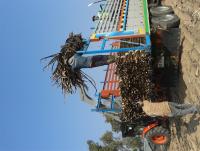


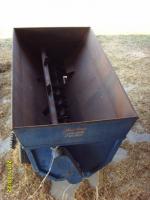
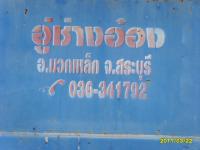
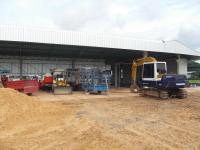
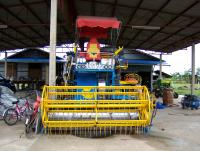
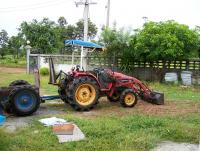
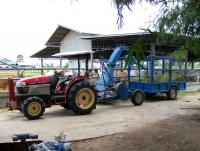
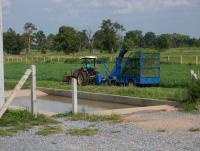
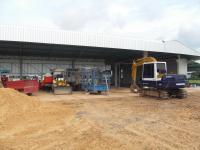


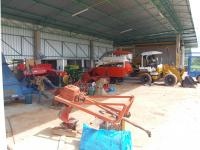
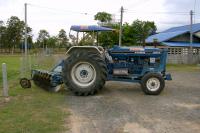
ITALIAN HAY EQUIPMENTS FOR SEL
in Farming in Thailand Forum
Posted
Hello Luca,
Sent you a PM with contact number. If farm equipment is still for sale please contact me.